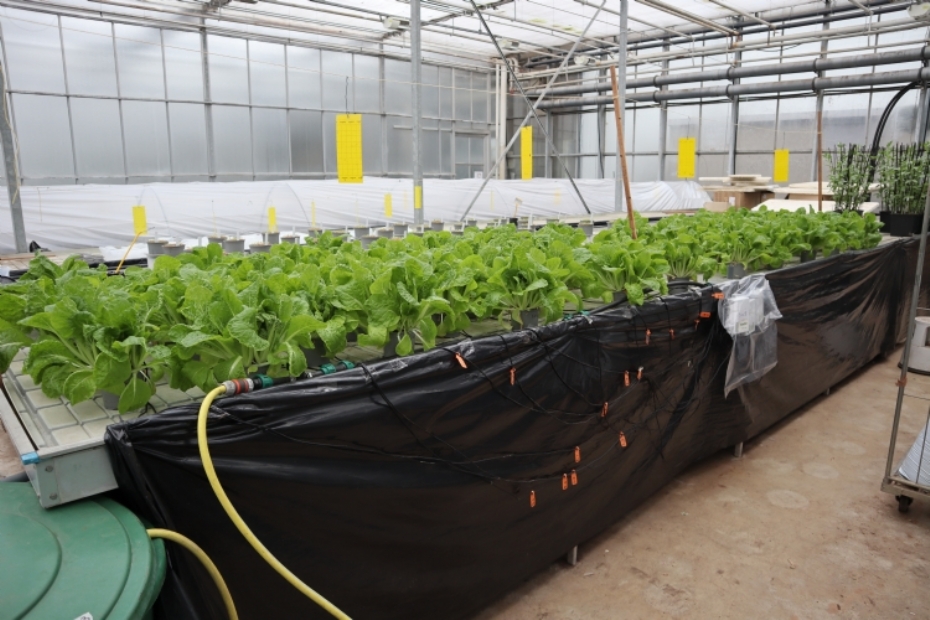Rhp study on calcium in renewable substrates: what you need to know |
|
|
|
|
 |
| 95 sec |
The shift to substrates based on renewable raw materials offers opportunities for more sustainable tree cultivation. At the same time, it also presents challenges.
| The test setup in the trial greenhouse of RHP in 's-Gravenzande |
One of these is the availability of calcium. RHP, the knowledge centre for substrates, conducted research into the availability of calcium in these renewable substrates — and the results are relevant for every tree grower.
In peat-based substrates, the pH and basic nutrition of the substrate are adjusted by a combination of liming and fertilisation. The added lime is not only responsible for correcting the pH, but also serves as a source of calcium and provides a buffer throughout cultivation. This ensures a stable substrate and predictable nutrient availability. In substrates based on renewable materials, this is different. These raw materials — such as coco, wood fibre or compost — require little or no liming to adjust the pH. As a result, an important source of calcium is lost, along with the buffering capacity of the substrate. Calcium is the most important building block for plant membranes and cell walls and is essential for cell division. It contributes to plant firmness. Therefore, it's important to still supply this nutrient effectively. RHP investigated the best way to do so.
Research
The study showed that adding lime to substrates based on renewable raw materials does little to directly make calcium available in the root zone. Clay contributes slightly more calcium, but gypsum and calcium nitrate in particular provide immediately available calcium at the start of cultivation. This is important because the plant, especially in the early stages of growth, needs sufficient calcium for healthy development. The application of gypsum or calcium nitrate therefore proved effective. The calcium concentration in the root zone increased immediately to a level that is otherwise only reached later in the crop cycle through fertilisation by the grower. This helps prevent deficiencies and ensures more stable plant growth. When using calcium nitrate or gypsum, the nitrate or sulphate content respectively increases, as does the EC. This must be taken into account. Combining a base fertilisation in the substrate with additional fertilisation during cultivation leads to the best balance. It's worth noting that gypsum can only be applied during the base fertilisation stage. Due to its limited solubility, it cannot be used in A/B tanks.
 | | An overview of the trial in the RHP greenhouse in 's-Gravenzande |
|
|
Key points when using renewable raw materials
For tree growers working with substrates based on renewable raw materials, it is advisable to:
• pay extra attention to calcium availability, especially in the early stages of cultivation.
• consider, in consultation with your substrate supplier, adding gypsum or calcium nitrate to the base fertilisation of the substrate to ensure sufficient immediately available calcium.
• regularly monitor the pH and nutrient balance in the substrate and adjust as needed.
 | | Hans Verhagen, Head of Research at RHP |
|
|
This article was previously published on 23 July 2025 on the Boom In Business website.
| LOG IN
with your email address to respond.
|
|
|
| There are no comments yet. |
|
| |
Anyone can place small ads for free through their own account.
Place a free ad
|
|
|
|